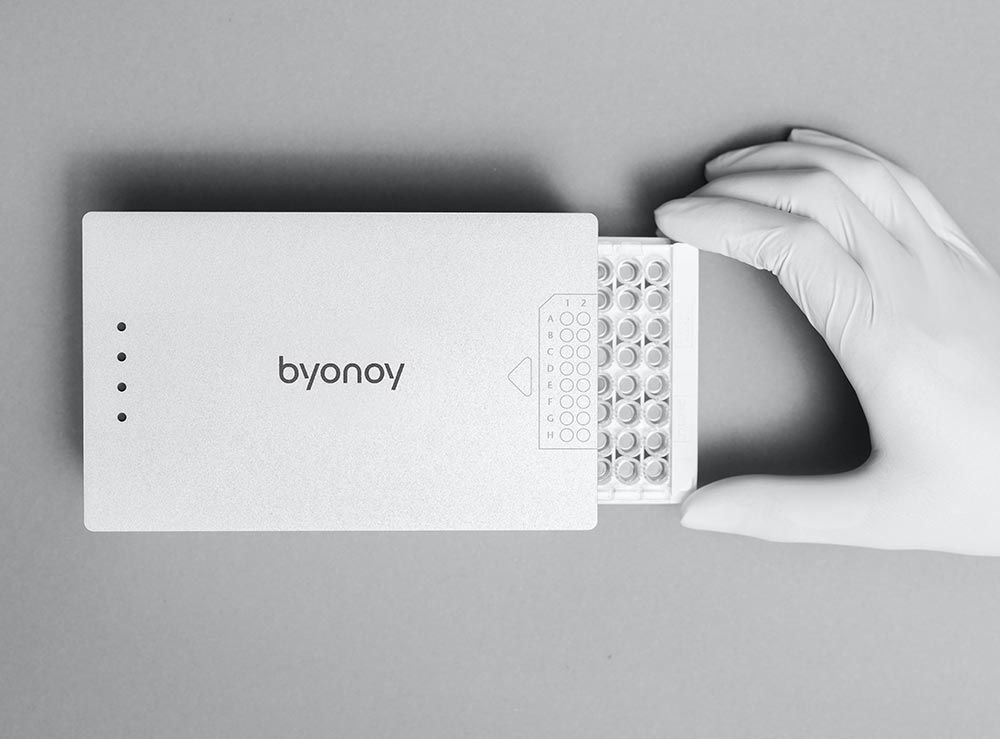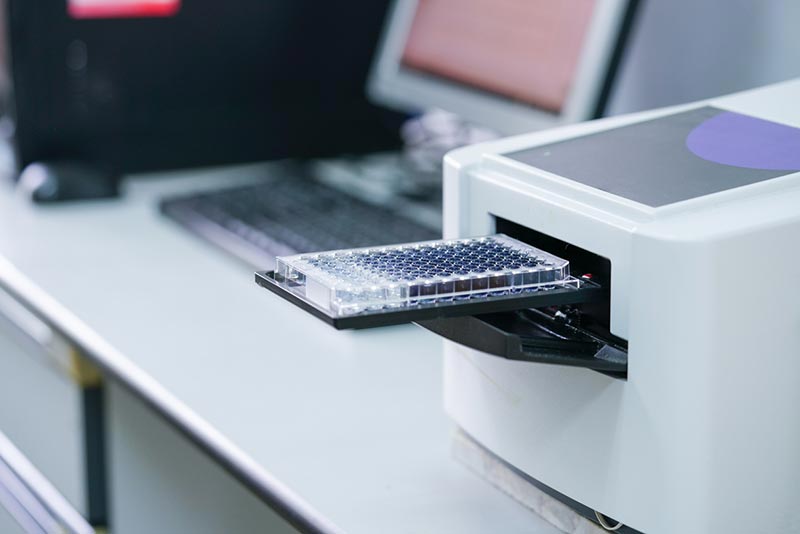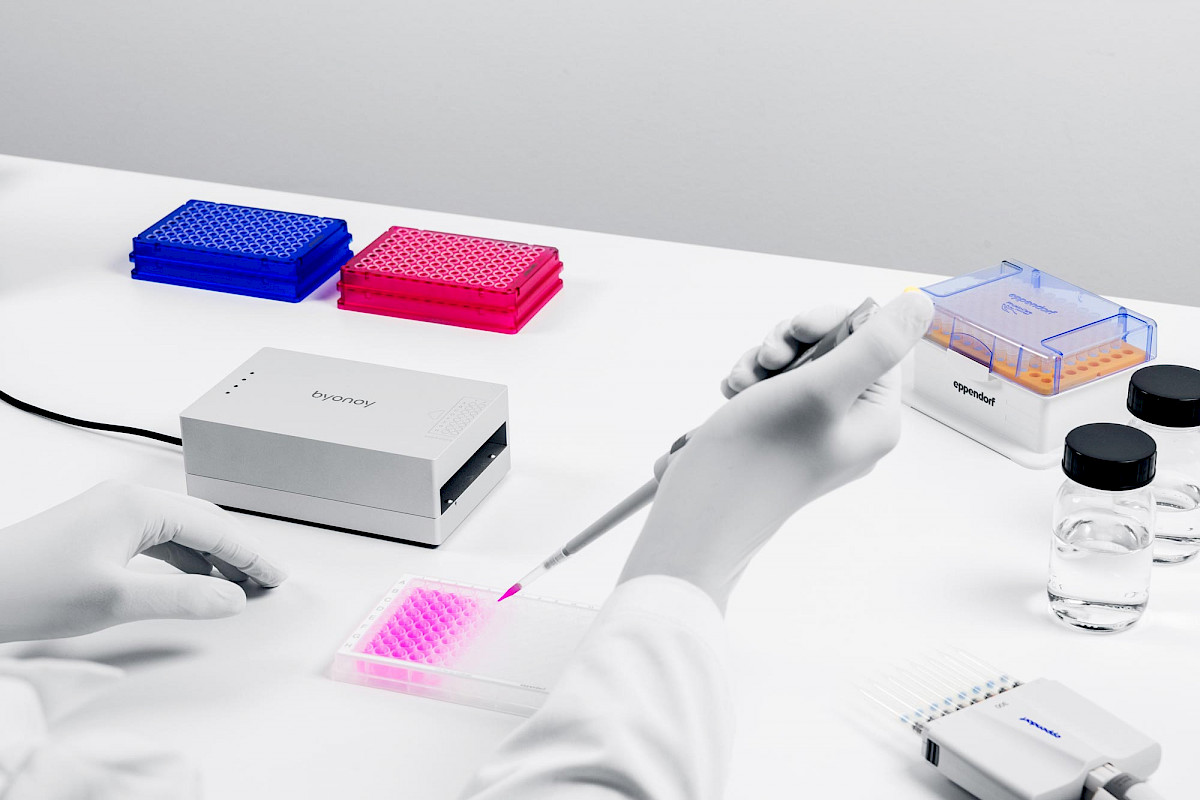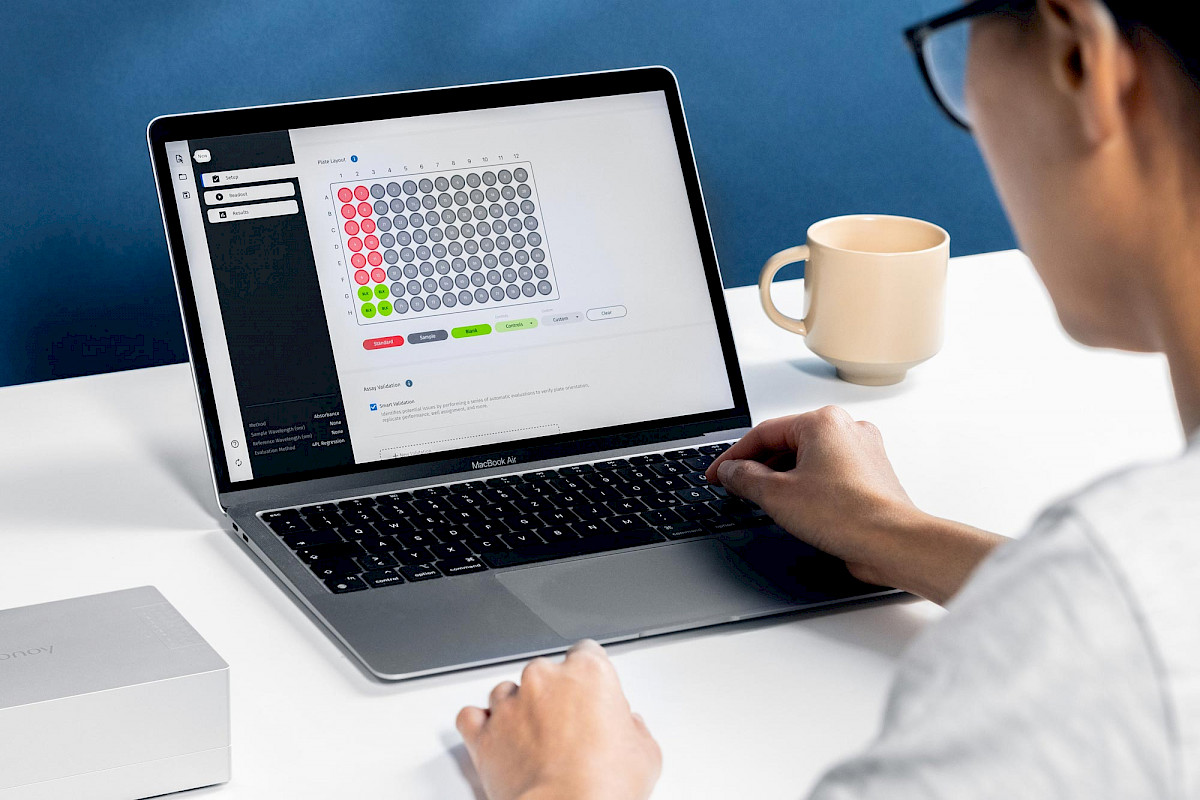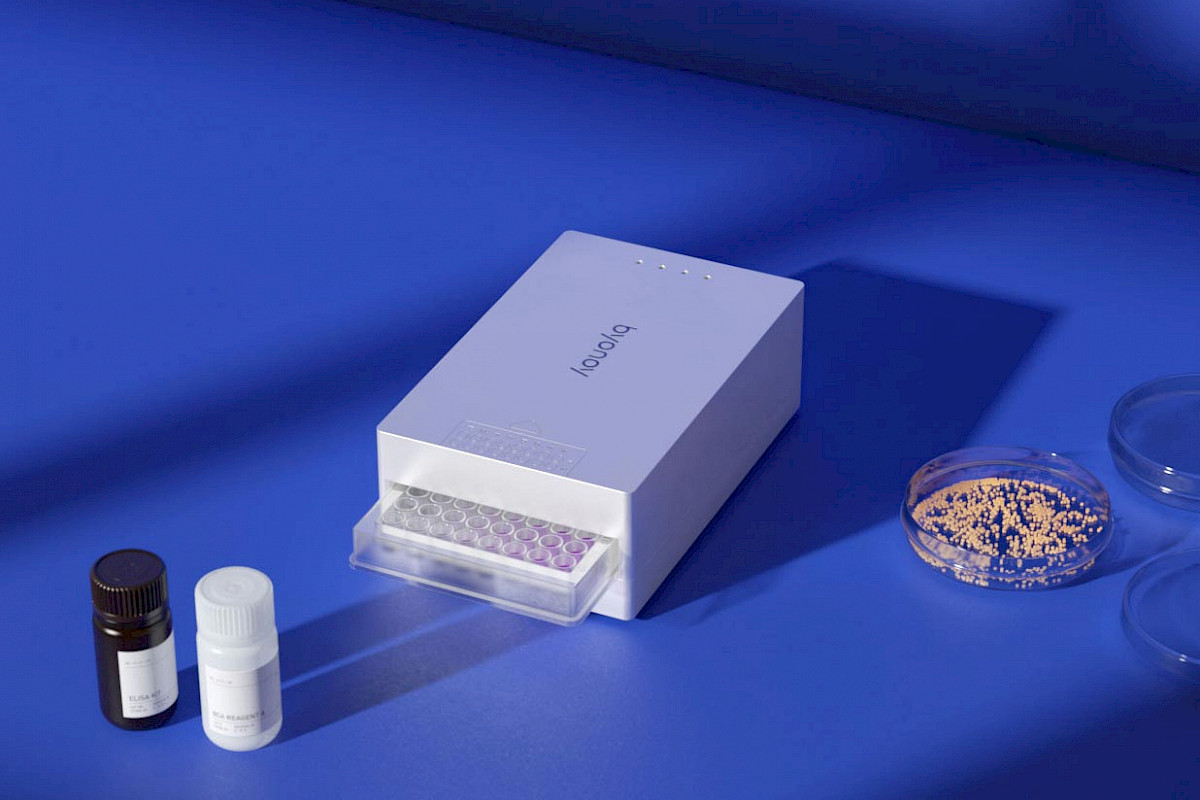Features & Benefits
How Miniaturization is Improving Laboratory Workflows

Compactness, a longstanding trend in consumer goods, has now extended its influence to laboratory equipment. We're accustomed to seeing images of people holding smaller, more efficient devices, highlighting the trend toward compactness. This evolution mirrors the journey of computers—from bulky desktops to laptops, tablets, and now pocket-sized smartphones. While these devices share similar capabilities, their radically different footprints demonstrate that size doesn't always matter.
The question arises: How is the shift towards smaller devices impacting workflows in life science laboratories?
Let's start with some notable examples of miniaturized laboratory devices from the past decade, such as miniPCR devices and the MinION Nanopore sequencer. These devices, once space-intensive giants in laboratories, have been miniaturized to the extent that they resemble handheld gadgets. Additionally, microplate readers have also embraced this trend. Traditional models, comparable in size to large printers, now boast compact designs like the Absorbance 96, with a footprint barely larger than a 96-well microplate.
As evidenced by these examples, the trend towards miniaturization extends beyond sequencers and thermal cyclers to encompass a wide array of laboratory devices, including microplate readers. Now, the question arises: are these innovations merely me-too products in a different form, or do they address significant frustrations in the lab and tackle specific pain points? Understanding the importance of compact design is crucial. It's not just about size; these devices are transforming laboratory workflows and benefiting various stakeholders. In this article, let us explore critical aspects of the miniaturization trend's reshaping of the landscape of laboratory equipment.
No more monopoly – let’s decentralize
Miniaturized devices offer a significant advantage through decentralization. This concept is vividly illustrated using the analogy of telephone evolution. Consider the traditional phone booth—an example of centralized infrastructure where multiple users contend for a single device, causing inconveniences. Transitioning to house telephones provided greater convenience, with phones available at multiple locations, reducing wait times.
Further miniaturization led to smartphones, fundamentally decentralizing communication by placing personal devices in the pockets of billions worldwide. This level of decentralization eliminates frustrations associated with waiting in line at phone booths or competing for household landlines. Similarly, in laboratories, miniaturized devices empower each researcher with personal, versatile tools, simplifying workflows and enhancing efficiency.
Decentralization in laboratories
The concept of decentralization in laboratories addresses the challenge of access to centralized equipment, similar to the analogy of the phone booth. While much lab work occurs at individual benches, certain processes require interaction with centralized equipment, typically housed in core facilities due to their high cost and specialized requirements. This centralized approach, while necessary for specific reasons like equipment cost and maintenance, often creates bottlenecks comparable to waiting in line at a phone booth.
For instance, imagine a scenario where a microplate reader is monopolized for a 3-day kinetics study, restricting access for other researchers—a significant inconvenience. Moreover, centralized workflows can conflict with researchers' preferred working styles, necessitating a shift towards decentralized access to instruments.
Having essential devices like mini-PCR machines or compact microplate readers available on-site at individual workstations or benches enhances convenience and efficiency. Labs often opt to purchase such devices despite access to centralized facilities, allowing flexibility and avoiding conflicts over shared resources. This shift supports smoother workflows, minimizes logistical challenges like transporting samples across buildings, and seamlessly accommodates diverse experimental needs.
Simplifying Research with Compact Devices
Another significant driver towards compact devices is the barrier to entry posed by many legacy instruments. Larger, cumbersome devices often create anxiety and complexity among researchers. Setting up these devices in the lab and navigating through their user interfaces, which may involve waiting for warm-up times and deciphering unintuitive touch screens, can be daunting. Additionally, grappling with extensive technical manuals and complex software further complicates the user experience.
While these larger devices offer extensive capabilities, the increasing list of laboratory operational challenges overshadow their benefits. Compact devices, on the other hand, streamline these processes, making research more straightforward and accessible. They mitigate the setup complexities and reduce the learning curve associated with traditional instruments, enhancing efficiency and user satisfaction.
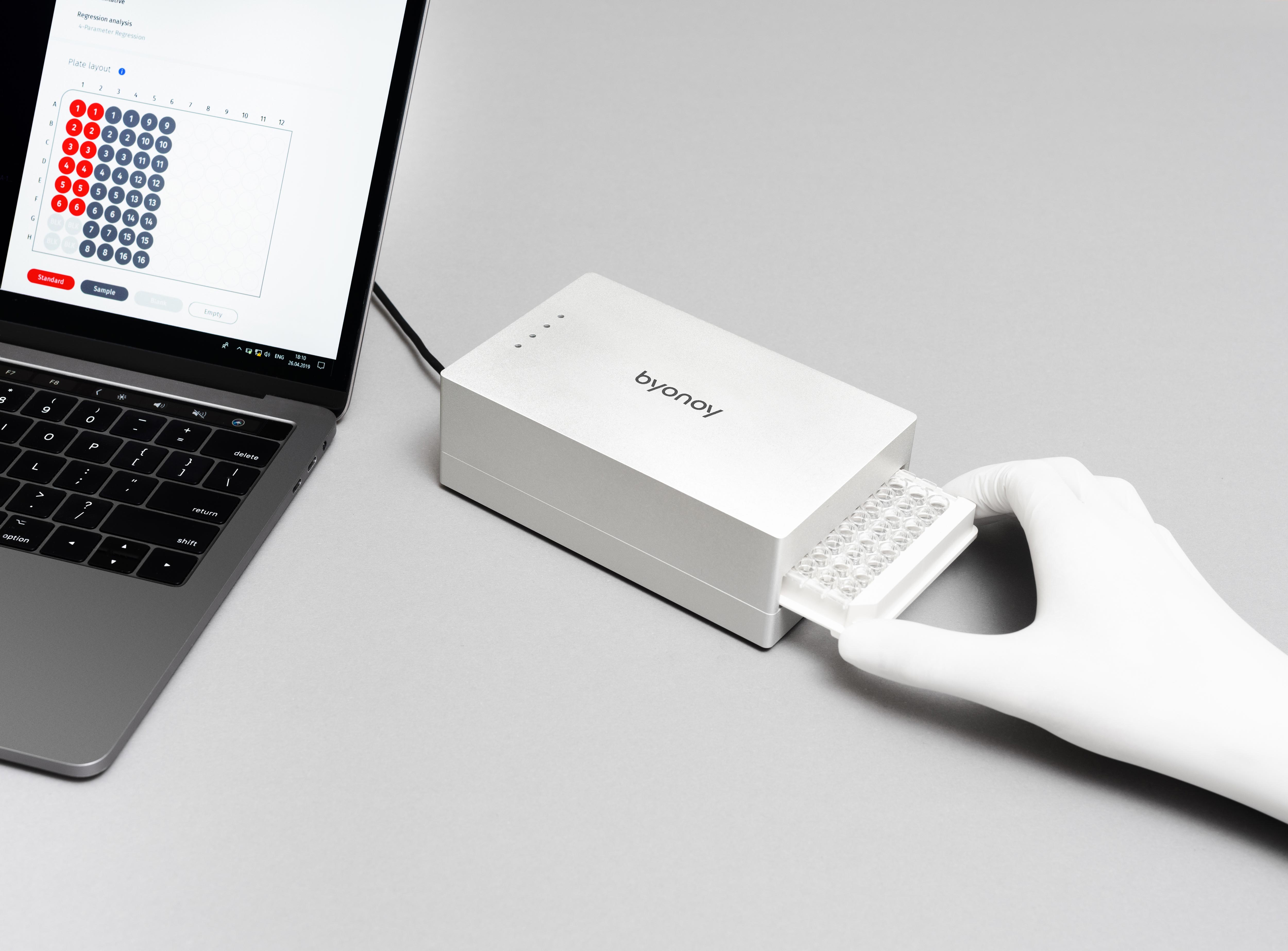
Our plug-and-play data analysis software with a USB connection provides ultimate flexibility and a great user experience
Enhancing Accessibility and User Experience
Many device manufacturers are actively working to eliminate barriers to entry in this field. They prioritize small-footprint designs and intuitive software for seamless operation. Additionally, devices offering digital interfaces and connectivity options like WiFi or USB are becoming standard, simplifying access and usage without the need to search for availability across labs.
Moreover, modern devices are designed to be user-friendly, minimizing the intimidating factor often associated with traditional lab equipment. Instead of feeling like alien technology, these instruments seamlessly integrate into laboratory workflows, allowing researchers to focus on their experiments without distractions. Ultimately, enhancing user experience and accessibility underscores the evolving landscape of laboratory instrumentation.
Enhancing Research Focus
We've explored two pivotal ways laboratory workflows evolve with the rise of compact and intuitive devices: decentralization and user-friendliness. Additionally, compact instruments are reshaping the laboratory landscape due to their inherent flexibility in footprint. For instance, the Absorbance 96 microplate reader exemplifies this shift. Initially used on traditional lab benches, it's now deployed in space-constrained environments like incubators or anaerobic chambers.
Moreover, its compact size and USB connectivity enable versatile usage, including fieldwork—an unthinkable feat with traditional counterparts. Regardless of the application or location, these small, portable, decentralized, and intuitive microplate readers are enhancing research capabilities.
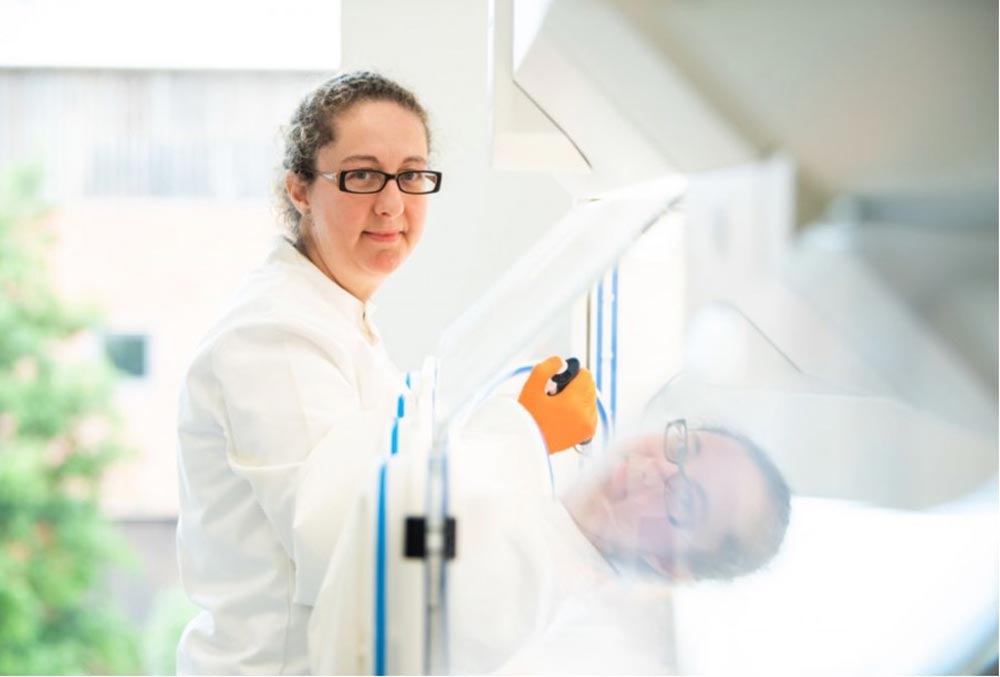
The picture shows one of our customers applying our Absorbance 96 in an anaerobic chamber for different assays
Summary
Modern instrumentation, characterized by its compactness and affordability compared to traditional solutions, significantly enhances accessibility in laboratories. This shift allows each lab or workbench to integrate personal devices, promoting decentralized workflows that offer exceptional advantages. These miniaturized devices are designed to be user-friendly with minimal barriers to entry, offering high flexibility and convenience. They streamline diverse research applications, paving the way for groundbreaking discoveries.
The driving force behind these innovations in laboratory equipment is the pioneering spirit of individuals who embrace new ideas and products from lesser-known companies. Innovators and early adopters recognize the potential of compact instruments, driving excitement and envisioning limitless possibilities. Researchers committed to innovation continually seek improved solutions, challenging conventional practices. Embracing this mindset not only enhances individual research efforts but also catalyzes transformative shifts in scientific inquiry, propelling us toward the next phase of discovery.
